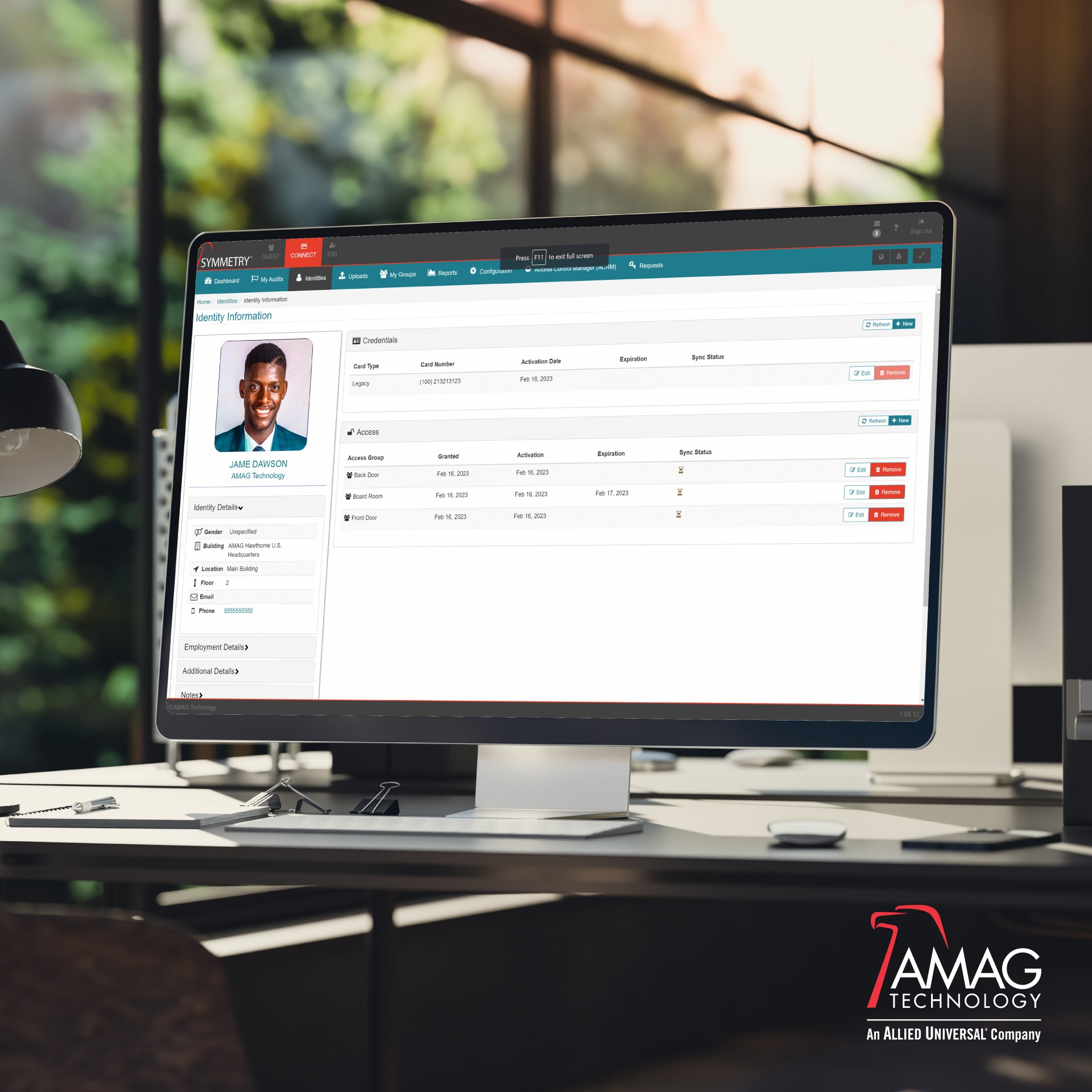Subscriber Exclusive
Traditional card-based access control systems are undergoing a transformation as mobile access solutions gain traction. But does this signal the end of physical cards? To explore this shift, we spoke with Phil Coppola, Business Development Director of Mobile Solutions—often called the “Mobile Technology Evangelist”—at HID Global. He shared his insights on the adoption of mobile access control and its impact on organizations and end users alike.
Understanding Mobile Access Control
Q: How would you explain mobile access control to someone unfamiliar with the concept, and how does it compare to traditional card-based systems?
Phil Coppola: Think about how you use your phone today. You listen to music, shop, watch TV, and even pay for things—all from a single device. Mobile access control is the next logical step. Instead of carrying a plastic card to gain access to a building or restricted area, you can now use your smartphone as a secure credential. Traditional card-based systems rely on physical cards programmed with access privileges, whereas mobile credentials provide the same functionality with added convenience. It’s about replacing single-purpose tools with a multifunctional device that simplifies your life.
The Shift Toward Mobile Solutions
Q: What is driving the shift from traditional access cards to mobile-based solutions in the access control industry?
Phil Coppola: There are three key drivers:
Increased Operational Efficiency: Mobile credentials eliminate the need for reissuing and disposing of physical badges, saving time and resources.
Sustainability: Mobile credentials are significantly more environmentally friendly. Studies show they are 338,000 times less likely to contribute to ozone depletion than ISO Prox cards.
Reduced Risk: People are less likely to lose their phones compared to access cards, and mobile credentials can be remotely deactivated for added security.
Enhancing Security and User Experience
Q: How does mobile access improve the user experience compared to traditional cards?
Phil Coppola: Mobile access integrates secure credential technology into a device people already use daily. It’s seamless, intuitive, and removes the need to carry an additional card.
Q: What makes mobile access more secure and convenient for both organizations and users?
Phil Coppola: Mobile credentials use advanced encryption, preventing unauthorized access and card sharing. Organizations benefit from simplified badge management, while users enjoy the convenience of not having to fumble for a card or worry about losing it.
Overcoming Challenges in Transitioning to Mobile Access
Q: What are the most common concerns organizations face when transitioning to mobile access?
Phil Coppola: The biggest concern is visual identification—how to replace the photo ID badge. Best practices suggest keeping photo IDs separate from access credentials to ensure that even if an ID is compromised, it doesn’t grant unauthorized access.
Q: Are there specific cybersecurity risks associated with mobile access, and how does HID address them?
Phil Coppola: Encryption key security is paramount. HID secures each system with unique encryption keys stored in a protected vault. Our MOBKEY program ensures safe credential exchanges, minimizing the risk of cyber threats.
Reliability and Cost Considerations
Q: How do mobile access solutions ensure reliability in environments with limited connectivity or during power outages?
Phil Coppola: Mobile credentials function as long as the phone has power. Additionally, iPhone users can access stored credentials for up to five hours after their battery dies.
Q: How do the costs of mobile access compare to traditional card systems?
Phil Coppola: A high-security SEOS card costs around $6.00, but when factoring in provisioning time, printers, maintenance, and accessories, the true cost is closer to $20 per card. If a user loses their card, the cost doubles. In contrast, mobile credentials can be deployed for as little as $2.00 per user per year as part of a three-year subscription, making them a cost-effective solution.
The Future of Access Control
Q: Are there industries where traditional access cards are still preferable?
Phil Coppola: Yes, in environments where phone usage is restricted—such as factory floors—physical cards or wristbands remain essential. Mobile access isn’t a one-size-fits-all solution, and alternative credentials will always be needed.
Q: Will traditional cards eventually be phased out entirely?
Phil Coppola: Physical cards will continue to exist, particularly in legacy systems. However, mobile credentials represent a broader transition toward more flexible, secure, and sustainable access control solutions.
Advice for Organizations Transitioning to Mobile Access
Q: What advice would you give organizations transitioning to mobile access?
Phil Coppola: Start with a hardware assessment to determine compatibility with mobile credentials. Also, clearly communicate the benefits to your team to ensure a smooth adoption process.
Q: What is the most compelling reason for organizations to adopt mobile access today?
Phil Coppola: Mobile access delivers a strong return on investment, a superior user experience, and significantly enhances security while reducing environmental impact. It’s a win-win for organizations and the planet.
With benefits spanning security, convenience, and sustainability, mobile access is poised to become the new standard. As Phil Coppola puts it, “Mobile access isn’t just the future—it’s the present.” Organizations embracing this transition today will be better positioned for the challenges of tomorrow.
Do you have insights to share? Contact us here and let’s talk!













